Raskolnikow is a 1923 German silent drama film directed by Robert Wiene. The film is an adaptation of the 1866 novel Crime and Punishment by Fyodor Dostoyevsky.
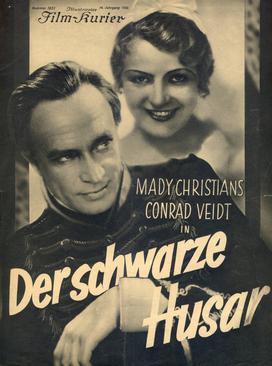
The Black Hussar is a 1932 German historical drama film directed by Gerhard Lamprecht and starring Bernhard Goetzke, Conrad Veidt, Mady Christians, and Wolf Albach-Retty. It premièred at the Ufa-Palast am Zoo on 12 October 1932, part of a whole string of 'patriotic' movies released in the late days of the Weimar Republic.
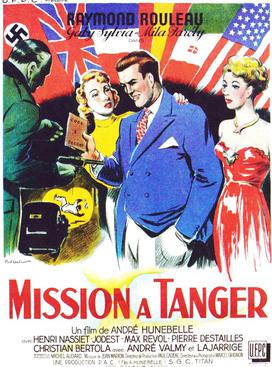
Mission in Tangier is a 1949 French drama film directed by André Hunebelle and starring Raymond Rouleau, Gaby Sylvia and Mila Parély. It was the first in the trilogy of films featuring dashing reporter Georges Masse, and was followed in 1950 by Beware of Blondes. It was shot at the Billancourt Studios in Paris. The film's sets were designed by the art director Lucien Carré.
Mon pote le gitan, is a French comedy film from 1959, directed by François Gir, written by Alain Blancel, starring Louis de Funès. In Italy the film is known under the title: "Il dottor zivago". the scenario was written on the basis of "Les Pittuiti's" of Michel Duran.
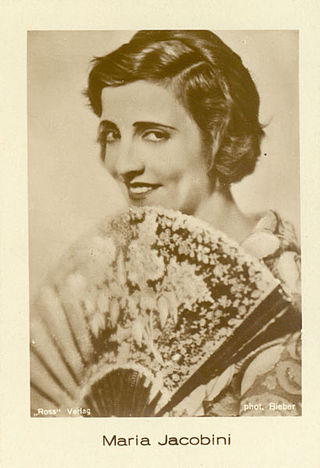
Maria Jacobini was an Italian film actress. She was married to the film director Gennaro Righelli and appeared in many of his silent films for the Vesuvio Film Company. She worked in the German film industry in the mid-1920s. She was the older sister of actress Diomira Jacobini.
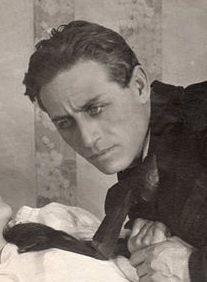
Gregori Mikhailovich Chmara was a Ukrainian-born stage and film actor whose career spanned six decades.
Folly of Love is a 1928 German silent comedy film directed by Robert Wiene and starring Maria Jacobini, Jack Trevor and Betty Astor. While several of Wiene's previous films had met with mixed responses, Folly of Love was universally praised by critics. The film was made at the Marienfelde Studios of Terra Film. It was Wiene's last silent film. His next work was the 1930 sound film The Other.
Villa Falconieri is a 1928 German-Italian silent drama film directed by Richard Oswald and starring Maria Jacobini, Hans Stüwe, and Eve Gray. It was based on the 1896 novel of the same title by Richard Voss.
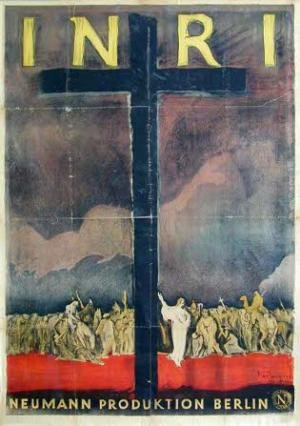
I.N.R.I. is a 1923 German silent religious epic film directed by Robert Wiene and starring Gregori Chmara, Henny Porten, and Asta Nielsen. The film is a retelling of the events leading up to the crucifixion of Jesus Christ. It was based on a 1905 novel by Peter Rosegger. It was reissued in 1933 in the United States with an added music track and narration as Crown of Thorns.

Peter Voss, Thief of Millions is a 1932 German comedy crime film directed by Ewald André Dupont and starring Willi Forst, Alice Treff, and Paul Hörbiger. It was based on the 1913 novel of the same title by Ewald Gerhard Seeliger which has been adapted into a number of films including previously in 1921 and later in 1946. It was the second to last film made by Dupont in Germany before he was forced to flee to the United States following the rise of the Nazi Party.

Man Without a Name is a 1932 German drama film directed by Gustav Ucicky and starring Werner Krauss, Helene Thimig and Mathias Wieman. It was shot at the Babelsberg Studios in Berlin. The film's sets were designed by the art directors Robert Herlth and Walter Röhrig. It was produced and distributed by UFA and premiered on 1 July 1932. It is inspired by the 1832 novel Colonel Chabert by Honoré de Balzac, updated to the modern era with the setting shifted from Restoration France to Weimar Germany. A separate French-language version Un homme sans nom was also produced.

The Bordellos of Algiers is a 1927 German silent drama film directed by Wolfgang Hoffmann-Harnisch and starring Maria Jacobini, Camilla Horn and Warwick Ward. The film was shot on location in North Africa. The film's sets were designed by the art directors Hans Jacoby and Bruno Krauskopf. It premiered at the UFA-Palast am Zoo in Berlin.
Athletes is a 1925 German silent film directed by Frederic Zelnik and starring Asta Nielsen, Gregori Chmara and Arnold Korff.

Downfall is a 1923 German silent film directed by Ludwig Wolff and starring Asta Nielsen, Gregori Chmara and Charlotte Schultz. The film was produced by Nielsen's own production company. The sets were designed by the art director Heinrich Beisenherz. It premiered in Düsseldorf and had its Berlin premiere at the Marmorhaus. The film survives but is missing its first reel.
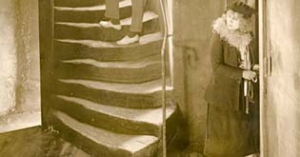
The Woman in Flames is a 1924 German silent thriller film directed by Carl Boese and starring Asta Nielsen, Alfred Abel, and Gregori Chmara.
The House by the Sea is a 1924 German silent film directed by Fritz Kaufmann and starring Asta Nielsen, Gregori Chmara and Albert Steinrück. The film is adapted from the play by Stefan Zweig.
Five Anxious Days is a 1928 German silent drama film directed by Gennaro Righelli and starring Maria Jacobini, Anton Pointner and Nathalie Lissenko. The film's sets were designed by the art directors Otto Erdmann and Hans Sohnle.
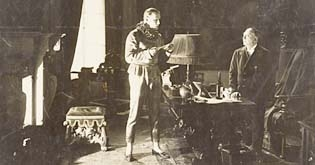
The Carousel of Death is a 1928 German silent film directed by Heinz Paul and starring Claire Rommer, Anton Pointner and Jean Murat.

Ariadne in Hoppegarten is a 1928 German silent sports film directed by Robert Dinesen and starring Alfred Abel, Maria Jacobini and Paul Henckels. It takes place in Hoppegarten, a traditional centre of horseracing in the German capital of Berlin.
Martyr is a 1927 French silent drama film directed by Charles Burguet and starring Charles Vanel, Suzy Vernon, and Jean Angelo.











